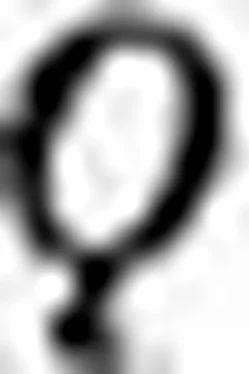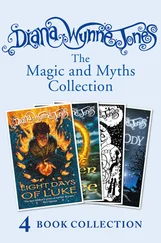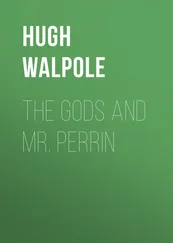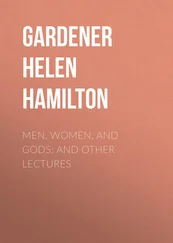Hilda Ellis Davidson - Gods and Myths of Northern Europe
Здесь есть возможность читать онлайн «Hilda Ellis Davidson - Gods and Myths of Northern Europe» весь текст электронной книги совершенно бесплатно (целиком полную версию без сокращений). В некоторых случаях можно слушать аудио, скачать через торрент в формате fb2 и присутствует краткое содержание. Жанр: История, на английском языке. Описание произведения, (предисловие) а так же отзывы посетителей доступны на портале библиотеки ЛибКат.
- Название:Gods and Myths of Northern Europe
- Автор:
- Жанр:
- Год:неизвестен
- ISBN:нет данных
- Рейтинг книги:5 / 5. Голосов: 1
-
Избранное:Добавить в избранное
- Отзывы:
-
Ваша оценка:
- 100
- 1
- 2
- 3
- 4
- 5
Gods and Myths of Northern Europe: краткое содержание, описание и аннотация
Предлагаем к чтению аннотацию, описание, краткое содержание или предисловие (зависит от того, что написал сам автор книги «Gods and Myths of Northern Europe»). Если вы не нашли необходимую информацию о книге — напишите в комментариях, мы постараемся отыскать её.
Gods and Myths of Northern Europe — читать онлайн бесплатно полную книгу (весь текст) целиком
Ниже представлен текст книги, разбитый по страницам. Система сохранения места последней прочитанной страницы, позволяет с удобством читать онлайн бесплатно книгу «Gods and Myths of Northern Europe», без необходимости каждый раз заново искать на чём Вы остановились. Поставьте закладку, и сможете в любой момент перейти на страницу, на которой закончили чтение.
Интервал:
Закладка:
There is little doubt that on the whole Snorri has given us a faithful picture of heathen mythology as he found it in the poets. Sometimes he quotes from poems which we still possess, and we can see what he is about; sometimes he gives us stanzas from lost poems, or tells stories which seem to be summaries of narrative poems now vanished; sometimes it is obvious that he is quoting statements which he himself does not understand. He was a fine scholar and literary artist, and was able on the whole to resist the temptation to alter his sources so as to rationalize them or to point a Christian moral. But he was primarily a literary artist, not an anthropologist or religious historian, and he was writing in the thirteenth century, not the heathen period. Much of his material came from poets who themselves had written in a Christian age. The question has to be raised then how far in his book we are dealing with an artificial world of myth, far removed from the living faith of the heathen period. For the moment however, provided we remember his limitations, there seems no better introduction to the mythology of the north than that which Snorri gives us.
2. The Gods and their World
Snorri began from a Christian standpoint, but a wise and tolerant one. When men by their sins broke away from God, he explained in his preface, they lost true understanding of him, and had to begin again from the beginning. As they looked at the wonderful living world around them and the heavens above, they felt that these must have been formed by an almighty creator, one who ruled the stars and existed before them. When certain great heroes came into their world, they believed that these must be the gods, and gave them worship. In this way Snorri explained the existence of the old legends, firmly rejecting the idea that the ancient divinities were devils. He knew that there were many gods and goddesses, and suggested that they came first from Troy, and that Thor was perhaps a grandson of King Priam, thus linking the north to the ancient world. Among the sons of Thor he placed Odin the Wise, who shared with his wife Frigg great powers of magic. Odin and Frigg moved northwards to Germany, and then to Denmark, Sweden, and Norway, leaving one of their sons to rule each kingdom. In Sweden in particular Odin set up chiefs and a code of laws ‘after the pattern of Troy’, and here was the centre of his rule. His descendants were known as the Aesir.
After this admirably objective introduction, Snorri presented the main body of his material, an account of the gods and their world. The first section of his book was called Gylfaginning , ‘the deluding of Gylfi’. Gylfi was a Swedish king who welcomed Odin on his arrival, and he later journeyed to the hall of the Aesir disguised as an old wayfaring man, Gangleri, to test for himself their wisdom and power. His questions were answered freely by three mysterious beings whom he found sitting one above the other on three high-seats, and who were introduced to him as High One, Just-as-High, and Third. These told him the names and characteristics of the chief gods and goddesses, and described the realms making up heaven and the underworld, the creation of the world, the doings of the gods, and their ultimate destruction by the powers of evil. The account ends with the promise of a new world of gods and men which will arise when the old is destroyed, and Gangleri is then told:
Now if you find more questions to ask, I don’t know how you will set about it, for I have never heard anyone tell more of the story of the world than this. Make what you can of it!
In this way Snorri skilfully avoids responsibility for the material which he is presenting. It is not he who speaks, as in the preface, but three doubtful characters who, you may think, were merely having sport with a naïve and inquisitive Swedish king. All men knew that the cunning old Aesir were past masters at spells to deceive the eyes and the mind. But Snorri guessed that most readers would be won by the persuasive tongues of the Great Three to listen for a while to their account of the vanished world of the gods.
The World Tree
This world had for its centre a great tree, a mighty ash called Yggdrasill. So huge was this tree that its branches stretched out over heaven and earth alike. Three roots supported the great trunk, and one passed into the realm of the Aesir, a second into that of the frost-giants, and a third into the realm of the dead. Beneath the root in giant-land was the spring of Mimir, whose waters contained wisdom and understanding. Odin had given one of his eyes for the right to drink a single draught of that precious water. Below the tree in the kingdom of the Aesir was the sacred spring of fate, the Well of Urd. Here every day the gods assembled for their court of law, to settle disputes and discuss common problems. All came on horseback except Thor, who preferred to wade through the rivers that lay in his path, and they were led by Odin on the finest of all steeds, the eight-legged horse Sleipnir. The gods galloped over the bridge Bifrost, a rainbow bridge that glowed with fire. They alone might cross it, and the giants, who longed to do so, were held back. Near the spring of fate dwelt three maidens called the Norns, who ruled the destinies of men, and were called Fate ( Urðr ), Being ( Verðandi ), and Necessity ( Skuld ). They watered the tree each day with pure water and whitened it with clay from the spring, and in this way preserved its life, while the water fell down to earth as dew. The tree was continually threatened, even as it grew and flourished, by the living creatures that preyed upon it. On the topmost bough sat an eagle, with a hawk perched on its forehead: the same eagle, perhaps, of whom it is said that the flapping of its wings caused the winds in the world of men. At the root of the tree lay a great serpent, with many scores of lesser snakes, and these gnawed continually at Yggdrasill. The serpent was at war with the eagle, and a nimble squirrel ran up and down the tree, carrying insults from one to the other. Horned creatures, harts and goats, devoured the branches and tender shoots of the tree, leaping at it from every side.
Creation
The tree formed a link between the different worlds. We are never told of its beginning, but of the creation of the worlds of which it formed a centre there is much to tell. In the beginning there were two regions: Muspell in the south, full of brightness and fire; and a world of snow and ice in the north. Between them stretched the great emptiness of Ginnungagap. As the heat and cold met in the midst of the expanse, a living creature appeared in the melting ice, called Ymir. He was a great giant, and from under his left arm grew the first man and woman, while from his two feet the family of frost-giants was begotten. Ymir fed upon the milk of a cow called Auðhumla , who licked the salty ice-blocks and released another new being, a man called Buri. He had a son called Bor, and the sons of Bor were the three gods, Odin, Vili, and Ve. These three slew Ymir the ancient giant, and all the frost-giants save one, Bergelmir, were drowned in his surging blood.
From Ymir’s body they then formed the world of men:
… from his blood the sea and the lakes, from his flesh the earth, and from his bones the mountains; from his teeth and jaws and such bones as were broken they formed the rocks and the pebbles.
From Ymir’s skull they made the dome of the sky, placing a dwarf to support it at each of the four corners and to hold it high above the earth. This world of men was protected from the giants by a wall, made from the eyebrows of Ymir, and was called Midgard. The gods created inhabitants for it from two trees on the sea-shore, which became a man and a woman. They gave to them spirit and understanding, the power of movement, and the use of the senses. They created also the dwarfs, creatures with strange names, who bred in the earth like maggots, and dwelt in hills and rocks. These were skilled craftsmen, and it was they who wrought the great treasures of the gods. The gods caused time to exist, sending Night and Day to drive round the heavens in chariots drawn by swift horses. Two fair children, a girl called Sun and boy called Moon, were also set by them on paths across the sky. Sun and Moon had to drive fast because they were pursued by wolves, who meant to devour them. On the day when the greatest of the wolves succeeded in swallowing the Sun, the end of all things would be at hand.
Читать дальшеИнтервал:
Закладка:
Похожие книги на «Gods and Myths of Northern Europe»
Представляем Вашему вниманию похожие книги на «Gods and Myths of Northern Europe» списком для выбора. Мы отобрали схожую по названию и смыслу литературу в надежде предоставить читателям больше вариантов отыскать новые, интересные, ещё непрочитанные произведения.
Обсуждение, отзывы о книге «Gods and Myths of Northern Europe» и просто собственные мнения читателей. Оставьте ваши комментарии, напишите, что Вы думаете о произведении, его смысле или главных героях. Укажите что конкретно понравилось, а что нет, и почему Вы так считаете.












